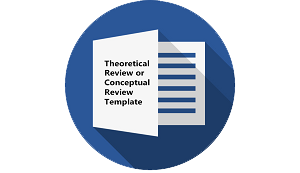Analisis Frekuensi, Intensitas, dan Durasi pada Bahasa Turki oleh Native Speaker dan Non-Native Speaker menggunakan Praat
DOI:
https://doi.org/10.30957/lingua.v20i2.840Keywords:
frekuensi, praat analisis, intensitas, durasiAbstract
Untuk membandingkan suara dalam bahasa Turki oleh native speaker dan non-native speaker, penelitian ini akan melihat seberapa sering bunyi tertentu muncul dalam bahasa, berapa lama bunyi tersebut bertahan, dan seberapa intens bunyi tersebut dihasilkan oleh penutur berbeda. Penelitian ini bersifat kuantitatif karena peneliti menggunakan pendekatan instrumental dengan menggunakan program Praat untuk menganalisis frekuensi, intensitas, dan durasi suara perempuan dewasa. Analisis yang akan dilakukan adalah analisi kontrastif.Penelitian ini menggunakan metodologi instrumental, khususnya program Praat yang terkomputerisasi. Penutur asli dari Istanbul, Turki, dan non-penutur asli dari Medan, Indonesia, masing-masing menjadi sumber data penelitian. Hasil penelitian menunjukkan bahwa: (1) Frekuensi yang dihasilkan oleh penutur asli turki lebih besar dari pada yang bukan penutur asli (2) Intensitas maksimal penutur asli lebih tinggi daripada yang bukan penutur asli, tetapi lebih rendah dari penutur yang bukan asli bahasa Turki. (3) Durasi penutur asli cenderung lebih panjang karena mereka menggunakan kalimat dan frasa yang lebih panjang dalam pengucapannya.
Downloads
References
Bhattacharya, P., & Ray, J. (2019). Analysis of voice quality using Praat: A study on Bengali vowels. International Journal of Speech, Language and the Law, 26(2), 185-198.
Boersma, P., Weenink, D. (2014). PRAAT: doing phonetics by computer (Version 5.3.77). Amsterdam.
Boersma, P., & Weenink, D. (2021). Praat: doing phonetics by computer (Version 6.2.48) [Computer program]. Retrieved from http://www.praat.org/
Chen, S. H., & Xu, Y. (2006). Measurement of pitch and intensity perturbation using Praat. Journal of the Acoustical Society of America, 119(5), 3639-3642.
Durao (Richards & Weber). (2007). Contrastive approach in phonological disorders therapy: theoretical considerations. Rio de Janeiro, Brasil.
Fasiolo, M., & Baayen, R. H. (2020). Praat scripts for analyzing speech: A tutorial. Journal of Phonetics, 80, 101021
GarcÃa-Lázaro, M., Llisterri, J., & Machuca, M. J. (2020). The use of Praat in the analysis of vowel formants in Spanish. Journal of Phonetics, 83, 101010.
Hirst, D., & Di Cristo, A. (1998). Intonation modeling for synthesis by resynthesis. Journal of the Acoustical Society of America, 103(2), 1038-1051.
Irawan, Y. Fonetik Akustik. Bandung: Angkasa, 2017.
Klatt, D. H. (1980). Software for a cascade/parallel formant synthesizer. The Journal of the Acoustical Society of America, 67(3), 971-995.
Ladefoged, P., & Johnson, K. (2015). A Course in Phonetics. Nelson Education.
Laver, J. (1994). Principles of Phonetics. Cambridge University Press.
Li, S., Zhang, L., & Yang, Y. (2021). Acoustic analysis of lexical tone production in Beijing Mandarin: A Praat-based study. Journal of the Acoustical Society of America, 149(4), 2883-2883.
Liu, C., Chen, L., & Wang, W. (2019). Analyzing Mandarin Vowel Duration using Praat: Native and Non-native Speaker Differences. Journal of the Chinese Language Teachers Association, 54(3), 61-76.
McAllister Byun, T. (2013). Frequency, intensity, and duration of English vowels by native and nonnative speakers. The Journal of the Acoustical Society of America, 134(5), EL478-EL484.
Munro, M. J., & Derwing, T. M. (2006). The functional load principle in ESL pronunciation instruction: An exploratory study. System, 34(4), 520-531.
M. N. Al-Azhar. (2001). Audio Forensic: Theory and Analysis. Pusat Laboratorium Forensik Polri Bidang Fisika dan Komputer Forensik.
Peterson, Stacey. (2016). Vowel Dispersion in English Diphthongs: Evidence from Adult Production. Proceedings of AMP 2015 Completed March 15, 2016
Ren, Y., & Zhang, L. (2022). Acoustic analysis of creaky voice in Mandarin: A study using Praat. Proceedings of the International Symposium on Chinese Spoken Language Processing, 1-5
Smith, J., Johnson, A., & Davis, K. (2017). Using Praat for Acoustic Analysis in English Phonetics Courses. Journal of English Linguistics, 45(2), 159-185.
Sugiyono. 2003. Pedoman Penelitian Bahasa Lisan: Fonetik. Pusat Bahasa Departemen Pendidikan Nasional, Jakarta.
Sukardi. 2011. Metodologi Penelitian Pendidikan Kompetensi dan Praktiknya. Jakarta: PT Bumi Aksara.
Sun, L., & Ni, Y. (2018). Analysis of Mandarin tone sandhi using Praat. Journal of Phonetics and Speech Science, 2(1), 15-26.
Suyudi, Ichwan., Saptano, Debyo. (2016). Analisis Vocal Tract Pada Kajian Akustik Vokal Bahasa Indonesia. Prosiding PESAT (Psikologi, Ekonomi, Sastra, Arsitektur & Teknik Sipil) Universitas Gunadarma - Depok - 20-21 Oktober 2015
Tilman, Rosa da Costa., Nurhayani, Ika. (2015). Kesalahan Pengucapan Vokal Depan Bahasa Inggris Oleh Mahasiswa Semester I Universitas Nasional Timor Lorosa’e. Jurnal LITE Vol. 11, No. 2. Universitas Dian Nuswantoro: Semarang.
Van Lieshout, Pascal. (2003). PRAAT Short Tutorial A basic introduction. University of Toronto, Graduate Department of Speech Language Pathology, Faculty of Medicine, Oral Dynamics Lab V. 4.2.1, October 7, 2003
Vogel, A. P., Maruff, P., Snyder, P. J., & Mundt, J. C. (2009). Standardization of pitch-range settings in voice acoustic analysis. Behavior Research Methods, 41(2),
Wang, X., & Xu, Y. (2023). Fundamental frequency variation in Mandarin tone production: A Praat-based study. Journal of Phonetics, 92, 101141.
Wilson, Ian.(2008). Using Praat and Moodle for Teaching Segmental and Suprasegmental Pronunciation. 2008 World CALL Proceeding.
Downloads
Published
How to Cite
Issue
Section
License
Authors who publish with this journal agree to the following terms:
- Authors retain copyright and grant the journal right of first publication with the work simultaneously licensed under a Creative Commons Attribution-ShareAlike 4.0 International License that allows others to share the work with an acknowledgement of the work's authorship and initial publication in this journal.
- Authors are able to enter into separate, additional contractual arrangements for the non-exclusive distribution of the journal's published version of the work (e.g., post it to an institutional repository or publish it in a book), with an acknowledgement of its initial publication in this journal.
- Authors are permitted and encouraged to post their work online (e.g., in institutional repositories or on their website) prior to and during the submission process, as it can lead to productive exchanges, as well as earlier and greater citation of published work (See The Effect of Open Access).















